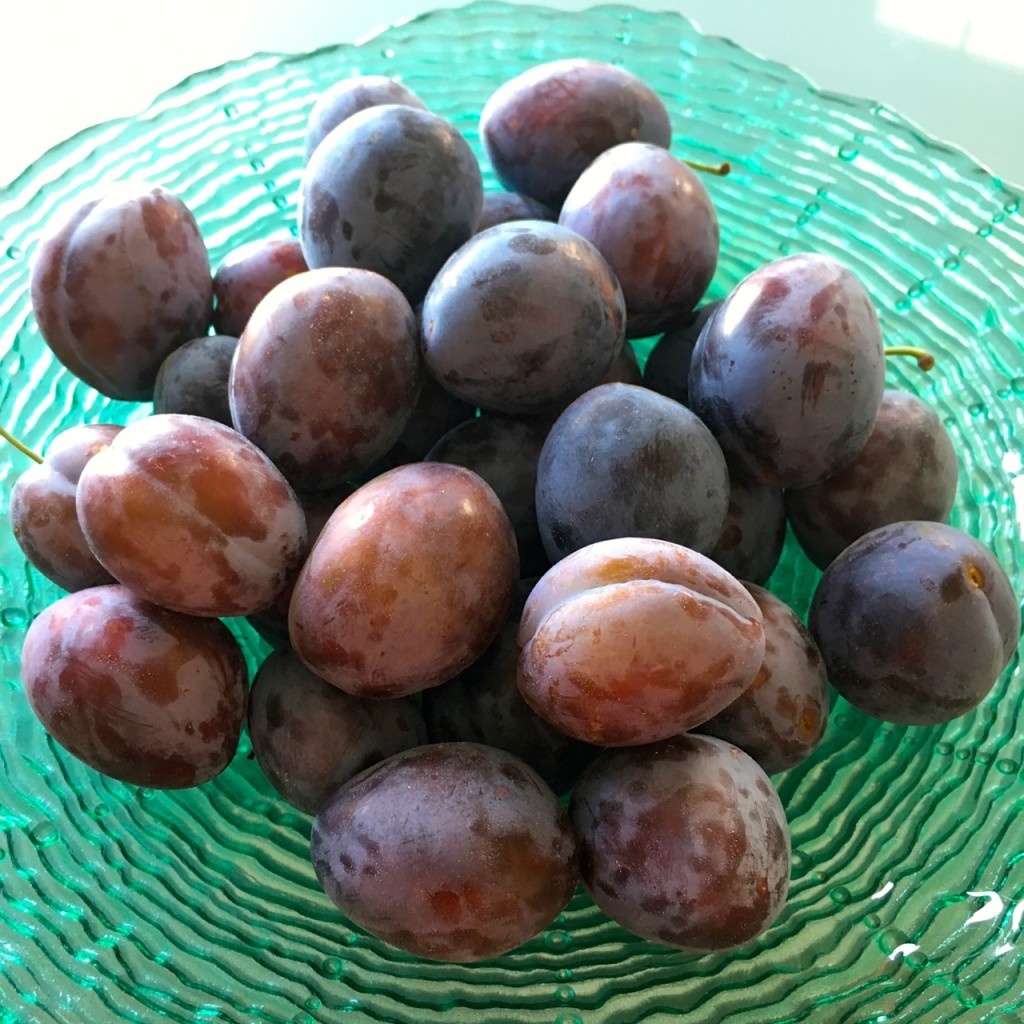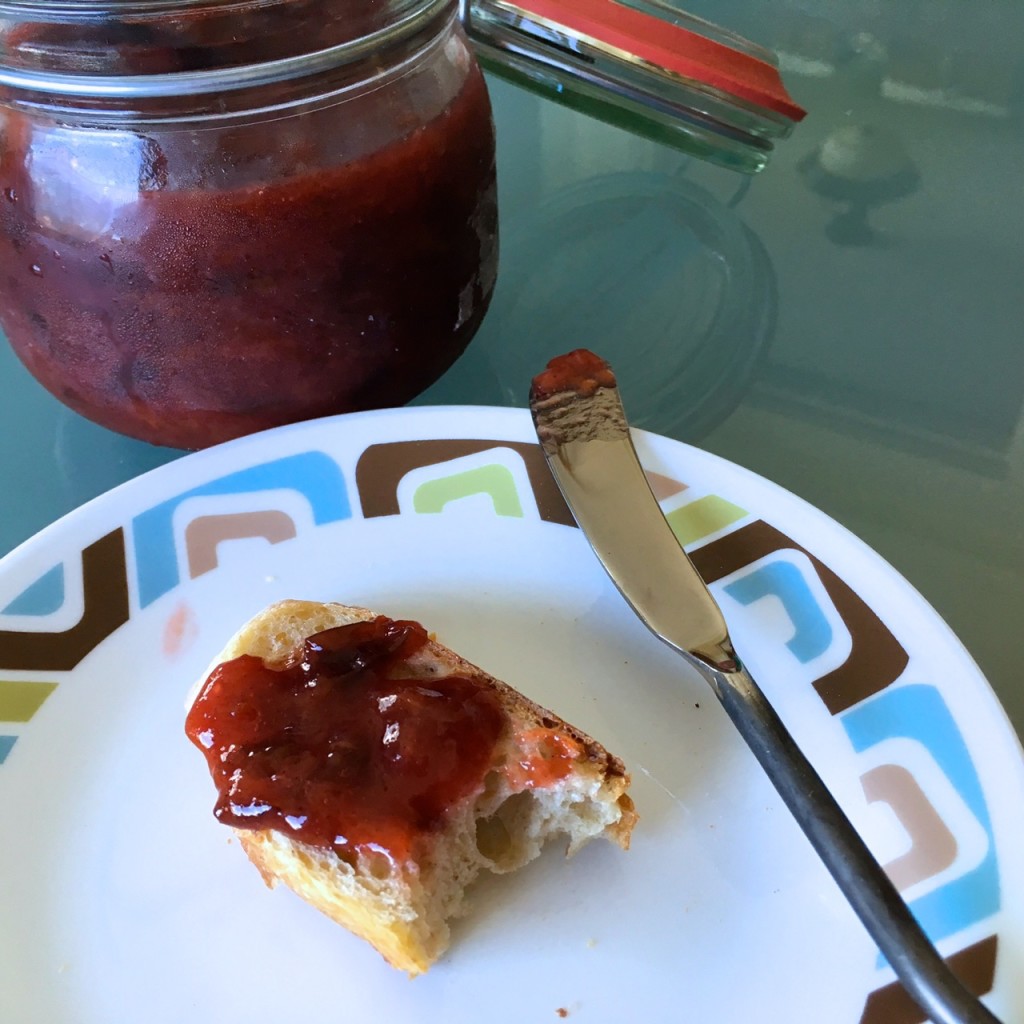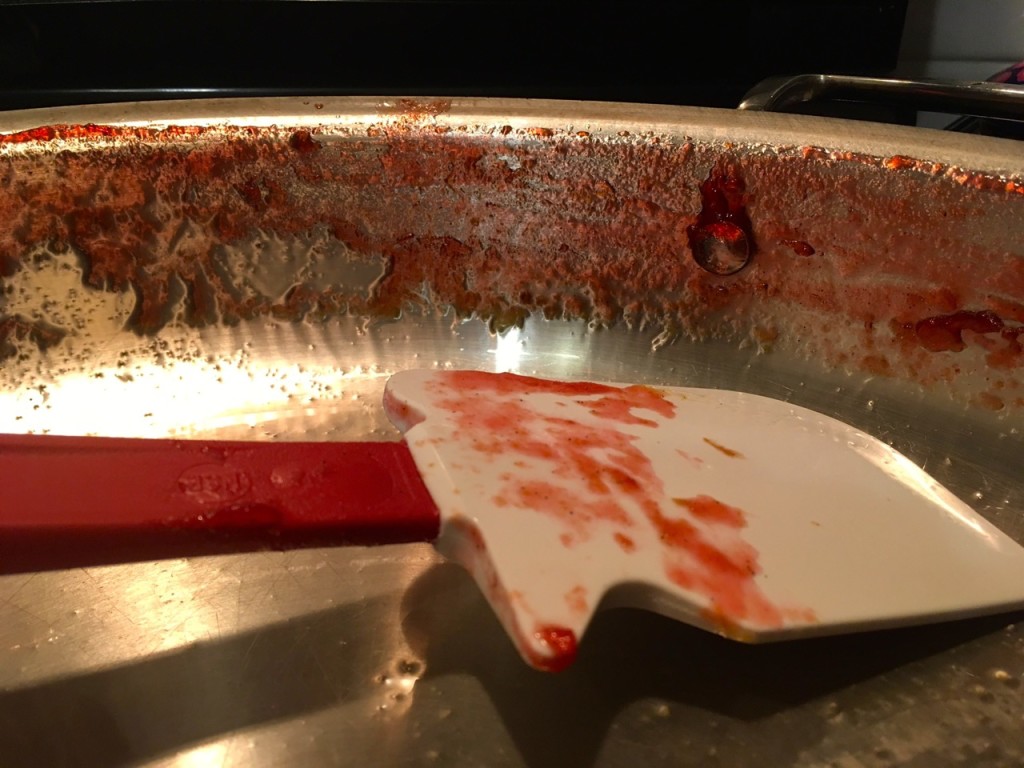not any ol’ plums…damson plums
I had no idea there was a plum tree in our yard until Himself came in and said, “Hey, we have plums out back!”
I’m not usually so inattentive to the things growing around me, but we’ve only been in this house for a few months now, and for the past two of them I’ve been recuperating from a badly sprained ankle. Our yard is especially bumpy and uneven and not the best place to set one’s weight on a beleaguered appendage. The last time I’d been in the backyard there was no sign at all that we’d soon be the proud possessors of enough plums to relieve every sluggish digestive tract in Seattle.
It turns out we have ourselves a damson plum tree. I remember when I was a kid my grandmother talking about the damson plums she’d enjoyed as a child, but I was never curious enough to ask her for more detail. (The same can be said for so very many things, to my great regret.)
When I saw our plums, I wondered. They certainly don’t look like the ones I find at the grocery. These are smaller and slightly oblong, sort of like fat purple footballs. Slightly astringent in taste, and even when they’re super ripe they’re not terribly juicy. So I looked them up online, and sure enough, they’re damsons. And they’re ready for the picking. The eating. The preserving.
I made chutney from the first picking, because chutney is such a delightful free-for-all. You can throw just about anything in there and it will turn out fine, as long as you like the things you put into it. And I froze a few pounds to use at some unspecified time down the road when the tree’s bounty is but a tasty summer memory warming the dark months of winter.
But looming before me was the task of jam making. I wanted homemade jam, oh yes I did. I just didn’t want to use pectin.
It’s a fairly modern practice, relying on store-bought pectin to encourage jams to set up. But I don’t like the unnatural thickness it inflicts on them. And as someone who bristles at following rules, especially when it comes to combining flavors in the kitchen, I resent the strict instructions that come with pectin.
“Ignore these rules at your peril!” they insinuate. “Deviate one jot and sugar will turn to salt, hens will lay rocks, and trees will hurl their fruit at you, just like in The Wizard of Oz.” Or some such. That’s the subtext I pick up, but perhaps I’m being overly sensitive.
So I set out to find advice on making pectin-free jam, something that would allow for creativity and personal preference.
Sure, pectin-free jam isn’t going to have that stand-a-spoon-in-it thickness of commercially prepared jam or jam made with commercially prepared pectin, but I’m willing to trade that for a fuller, more nuanced flavor. We only think jam should be that thick because it’s all we’ve ever eaten, right? Rather than let it flow delicately over a piece of toast, we think we have to lay it on with a trowel and the firm touch of a mason building a cathedral. But sampling pectin-free jam brings the same sort of delightful epiphany that occurs when you make your first batch of aioli after a lifetime of eating store-bought mayonnaise.
“Where have you BEEN all my life, you wondrous bite of deliciousness?!” we think, even if we don’t say it out loud. Because most of us don’t talk to our food. Or if we do we don’t admit it.
Rather than reinvent the wheel, I decided to find someone who had already done all the work, gone through the trial and error and figured everything out. I found that someone on the Northwest Edible Life blog, researched and written with great deftness and insight by Chef Erica. She has an understanding of preserves that, in my opinion, borders on the mystic. Well she’s demystified the process for the rest of us, and I’m happy to share her instructions for making pectin-free jam.
She not only tells you how to do it, but she provides the lowdown on how to tweak it to your liking so, as she says, your jam doesn’t taste just like what everyone else makes. She even has a nifty little Signature Jam Flavor Maker Chart to show you what flavors go together naturally, so you can add in spices and other flavorings and create a jam that is uniquely yours.
The results of my first round of jam-making using the damson plums and her method as my guide yielded the best jam I’ve ever tasted!
Yes, the house is hot from jam making in summer. Yes, it costs more to make it, what with the product (if you don’t have a tree, a garden or a generous neighbor), the jars and assorted bits and bobs and ingredients. And the gas or electricity it takes to cook down a trove of fresh fruit into a few tiny jars.
But in the dead of winter, when you open one of those jars and smear some of that bright, flavorful jam over a warm slice of toast or a piece of pound cake, you’re going to be so very happy that you spent the time, money and effort and created something special. A jam that is uniquely yours.



















My grandmother used to tell me that her mother-in-law could make the best jelly and jams without any store bought help, but that she never could master it. The last jelly and jam making I was involved with was “helping” her sometime back in the 60’s. I doubt I will ever attempt to make jelly or jam, but I am so glad to know that the art didn’t die a century or so ago.
I think it’s really a matter of cooking it down far enough. Of course it’s possible to cook it TOO far down. As with so many things in life, the more you do something the more you learn about it–and the more you figure out how to tweak the variables to get it just like you want it.
Give it a try sometime, Suzanne!
Cheers!
Carol